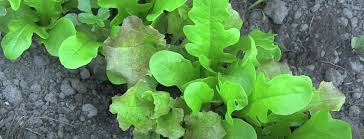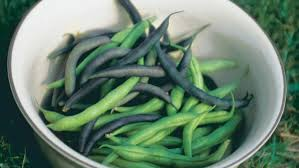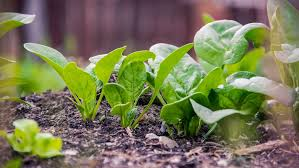As the summer progresses, garden gaps will inevitably start appearing as crops are harvested. Leaving these gaps can lead to weed growth and soil erosion. However, you don’t need to leave your garden bare, even if you have plans for fall crops later. With the right choice of plants, you can fill those gaps with vegetables that mature quickly, giving you a harvest in just a few weeks. Here are five fast-growing vegetables that are perfect for quick harvests and keeping your garden productive.
1. Radishes
Time from sowing to harvest: 25 days
Radishes are one of the quickest-growing vegetables, taking just three to four weeks from sowing to harvest. They’re incredibly easy to grow and can be sown directly into prepared soil or containers. Sow the seeds about 1 inch (2.5 cm) apart, and thin them out to ensure proper root growth. Radishes grow best in cool weather, so be sure to water them regularly, especially during dry spells. Harvest the roots before they grow too large to avoid a woody texture and overly hot taste. To enjoy a continuous harvest, sow new batches every few weeks throughout the summer.
2. Salad Leaves
Time from sowing to harvest: 21 days
Salad leaves, such as lettuce, arugula, kale, and mustard greens, grow quickly and are perfect for a fast harvest. For the best results, sow a mix of cut-and-come-again varieties, which allow you to harvest leaves gradually. Space the seeds 6 to 10 inches (15-25 cm) apart and cover them lightly with soil. Water regularly and keep the soil weed-free. In very hot climates, consider using shade cloth to protect the seedlings from extreme temperatures. You can start harvesting in just three weeks by picking outer leaves and allowing the inner leaves to continue growing.

3. Bush Beans
Time from sowing to harvest: 60 days
Bush beans are fast-growing and can be sown immediately after harvesting another crop. In just two months, you’ll have tender beans ready for harvest. Sow the seeds directly into the ground or in containers, spacing them 10-16 inches (25-40 cm) apart. As the plants flower and pods develop, pick them regularly to encourage more beans. This variety of beans thrives in full sun and is perfect for quick and tasty summer dishes.

4. Carrots
Time from sowing to harvest: 50 days
While carrots aren’t the quickest vegetable, some fast-growing varieties, like the finger-sized types, can be ready in as little as six weeks. Plant the seeds thinly in well-prepared soil and cover them with a light layer of potting mix or soil. Water gently and thin out the seedlings when they appear to prevent overcrowding. Carrot flies can be a nuisance, but using row covers can protect your crop. Harvest the carrots while they’re still young for the best flavor and texture.
5. Spinach
Time from sowing to harvest: 30 days
Spinach is an extremely versatile leafy green, ideal for salads, quiches, or added to pasta dishes. For a quick harvest, sow the seeds about 1 inch (2.5 cm) apart and thin the seedlings to about 8 inches (20 cm) apart once they grow. Spinach grows best in cool conditions, so try to plant in partial shade during hot summer months to prevent bolting, which causes the leaves to become bitter. Harvest the leaves regularly, cutting them with scissors to encourage more growth.

Preparing the Ground for Quick Growth
For fast-growing crops, the soil should be well-prepared, nutrient-rich, and free from weeds. Adding organic fertilizer before sowing and raking the soil to a fine texture will help improve germination and plant health. These vegetables can also thrive in pots filled with good-quality potting soil.
Protecting Your Crops from Pests
Although these vegetables mature quickly, pests like carrot flies, flea beetles, and slugs can still be a threat. To protect your crops, use row covers for carrots and salad leaves, and set up traps for slugs, such as beer traps or upturned citrus shells. These simple measures can ensure a healthy, speedy harvest.
With these five fast-growing vegetables, you can quickly fill any gaps in your garden and enjoy a fresh, continuous harvest throughout the summer. If you’ve grown other speedy crops, feel free to share your recommendations in the comments!
